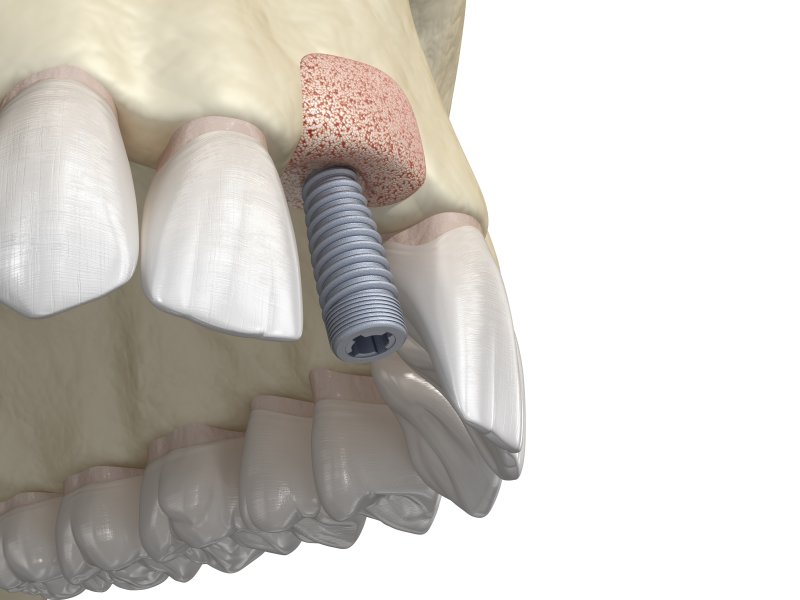Tooth loss is a common issue that affects millions of Americans throughout the country. Fortunately, losing a tooth doesn’t mean that you need to go the rest of your life with gaps in your smile. Dental implants are a preferred tooth replacement option because of their numerous benefits. However, some patients need to have a bone graft before they can have dental implants placed. Continue reading to learn why this is sometimes necessary.
Why Does Missing Teeth Cause Bone Loss?
The root of your tooth stimulates your jaw whenever you chew, therefore keeping it strong and healthy. However, when you’re missing teeth, your jawbone isn’t receiving this stimulation. Over time, the bone tissue begins to be reabsorbed by the body. As time goes on, the more the bone deteriorates. This can cause difficulties when it comes to eating and speaking. It can even affect the alignment of your natural teeth.
What Is Bone Grafting?
A bone graft works by placing existing bone tissue into the jaw. This bone can come from another part of the mouth, a different area of the bone, or by a human or animal doner. Sometimes, synthetic material is also used. Once this new piece of bone is placed in the correct area, it will seal itself to the old bone by creating new bone cells around the grafted material. In the end, you will build up additional bone tissue in the areas that you need it. This is a relatively minor procedure and patients are typically sedated throughout the process. Most patients who receive bone grafts report that the experience was pain-free!
Why Do You Need a Bone Graft?
Needing a bone graft before getting dental implants is fairly common. This technique is required when a patient doesn’t have a sufficient amount of healthy bone tissue in their mouth that is capable of supporting dental implants. A lot of the time, this is a result of previous tooth loss, but it can also be caused by developmental defects, periodontal disease, and facial injuries.
What Happens After Your Bone Graft?
After the bone graft procedure is complete, your dentist will prescribe you antibiotics to prevent infection. If deemed necessary, you may also be given pain medication for the recovery period, but many patients are able to do great afterwards with just the antibiotics. Once the bone graft fuses with the natural bone in the mouth, your dentist will be able to place your implants. Depending on your individual case, this could take anywhere from three months to a year. It all depends on how substantial your bone loss is.
A bone graft may sound scary, but it is a very common procedure needed before implant placement surgery. During your initial consultation, it will be determined whether or not one is necessary for you. You’ll be on a path towards a straighter smile in no time!
About the Author
Dr. Charles Walker is an experienced dentist who has been working in the field for over three decades. He earned his dental doctorate from the University of California at San Francisco School of Dentistry and always stays informed on advancements with the dental industry. He is a Fellowship member of the American Dental Implant Association as well as a proud member of the American Dental Association and Utah Dental Association. To learn more about bone grafts or to schedule an appointment at his office in Salt Lake City, visit his website or call (801) 467-6886.


